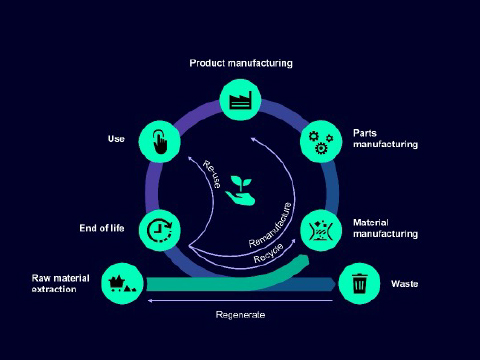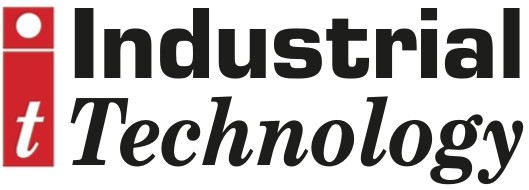
Posted to News on 3rd Feb 2025, 12:00
A 5-step approach toward sustainable design
To overcome resource scarcity, meet emissions targets, and exceed customer expectations, industrial businesses are steadily increasing their environmental consciousness. And those set to succeed are doing so holistically and from the very start of their development processes, as Eryn Devola, Head of Sustainability, Siemens Digital Industries, explains.

(See Siemens at Machine Building North, 10 April 2025, on stand 50)
Did you know 80 percent of a product's environmental impact is determined in the design phase? With so much dependence on design, it is critical to start thinking about the environmental impact of a product as early as possible, alongside the traditional drivers of cost, quality, and time. Prioritising one aspect over the others will not suffice anymore.
For example, airfreight may be the most time-efficient transport in the supply chain, but it has a high cost and high environmental impact. Meanwhile, a 100 percent recycled plastic part may have a lower carbon footprint, but the quality may drop, requiring a faster rate of replacement for the part.
To succeed, businesses need to move away from siloed knowledge of their products and processes toward collective intelligence to make better design decisions.
The Digital Enterprise holds the key for all sustainable outcomes. Combining the real and digital worlds makes it possible to seamlessly integrate and digitalise the entire value chain. This delivers a digital thread that serves as the foundation for collective intelligence, connecting workflows and processes along the value chain. It also provides designers with access to a comprehensive digital twin which is informed by simulation results and production data, material information, supplier and product carbon footprint data, etc.
With this sturdy foundation in place, businesses can start exploring design options through a continuous loop of optimisation across the entire product lifecycle and ecosystems. This empowers engineers to rethink design as they have access to a dynamic and iterative process that is never finished and allows for endless recycling, remanufacturing, and reuse; however, for this to work, sustainability needs to be embedded into all phases of the design process.
Conceptual design
In addition to traditional design requirements such as performance, durability, useability, and cost, designing for sustainable outcomes means meeting new requirements, including carbon emission caps, water use restrictions, and recyclability. Capturing these early is critical to defining the key performance indicators (KPIs) that will be used to monitor the design process and helps find the best path forward when requirements oppose each other.
Furthermore, bringing in all requirements and connecting them to the design process from the beginning provides businesses with the holistic product view they need to make better decisions. While an experienced designer might be able to intuit a satisfactory answer to a question such as: what is the impact on cost and carbon emissions when swapping in a lighter material versus thinning a component, and how would that influence manufacturability? But it is only by combining the real and digital worlds that they and their company can innovate without limits.
This ability to innovate becomes even more critical when you look at an example such as the battery manufacturing market. There is a finite supply of the key materials for battery production, making it critical to set and achieve targets on material efficiency and scrap rates to ensure as much of the material gets into the products as possible.
Furthermore, by reducing material waste, the associated impact on a per cell basis is lowered, resulting in more sustainable batteries. Recycled material KPIs are similar but must also be understood alongside any increased process complexity.
Suppliers
Few businesses design or build every component in their products, so when sourcing materials and components, it is important to establish communication with suppliers that best comply with sustainability requirements.
This is done by leveraging product lifecycle management (PLM) software that helps a business source and compare the potential suppliers based on sustainability request for proposal (RFP) requirements. Doing so not only takes available information about suppliers into account, but also adds further information to your Digital Enterprise from supplier logistic network simulations.
Simulating logistics in the digital world helps optimise logistics networks to traverse fewer miles, optimise warehouse facilities, and container fill. By answering big logistics questions early, businesses can uncover the dynamic relationships between suppliers and the rest of design and development.
A business can then incorporate the compliance results of the supplier network into the product KPIs to create even more transparency into the environmental impact of the product. This can also further incentivise the supplier network to seek carbon-conscious production methods to remain as key suppliers and partners.
Once detailed design has begun, the right tools will enable engineers to select the best part materials based on required material properties and the associated sustainability scores, which are calculated directly within the design tools. One material may result in a lowered carbon emission rating within manufacturing because it is more recyclable, while another material option might be more durable and extend product life. The digital twin includes this information, making it easy to evaluate and understand dynamic relationships between product performance, manufacturability, energy efficiency, carbon emissions, profit, and more. This enables designers to do rapid design iterations and get sustainability impact scores earlier resulting in a much better understanding of the effects of their decisions. It also makes it easier to design with overall sustainability in mind.
To further optimise the product for sustainability, it can be simulated alongside related production systems to identify manufacturability or energy consumption improvements before making real world investments. Accessible design exploration allows for hundreds of design options and pushes the boundaries of sustainable innovation. It can also remove time-intensive reworks, giving rise to adopting more innovative technologies and materials. Design decisions that are based on holistic sustainability KPIs will result in massive efficiency gains for the product in the real world.
Validation
Once the detailed design is complete, it is time to validate the product's performance. Validation covers many workflows and engineering domains to ensure the product functions as expected. Innovative materials and geometries used to meet sustainability targets might require more thorough testing to characterize performance.
Simultaneously, new data and understanding of physical phenomena can be used to validate the simulation models used in design, or even optimize them through AI-enhanced reduced order models (ROMs). And data collected from the field or at the end of a product's life can uncover novel situations, or edge-cases, to refine the digital twin for the next iteration.
Leveraging the Digital Enterprise streamlines these validation processes and puts more capability in the hands of designers for the product's sustainability. Data taken in real-time can be used to optimise products in the field through software changes or maintenance requests.
Historical data collected by IoT systems in manufacturing or from the product in operation can guide more efficient maintenance schedules and further inform the digital twin. Can a part be made lighter? What percentage of parts can return to the material stream? Can that percentage be increased? These are just some of the questions that can be answered with these digital technologies.
Design improvement
Improving a product is not the final step in the design process, but rather a continuous journey that extends long after the product is made. Integrating sustainability goals into product design is making that a reality for every company. With simulation data, testing results, and a more concise digital twin, uncovering any performance gaps, reliability issues, and refurbishment and upgrade paths for products becomes much easier.
Design improvement helps scale sustainability impact for industry. Iterations toward more environmentally friendly products decrease operational expenses and increase material savings, customer satisfaction, investor interest, and the planet's health.
Designing a more sustainable world
When 80 percent of a product's environmental impact is influenced by decisions in the design stages, it is key to make the right decisions from the beginning. A good design must not only focus on cost, performance, utility, and attractiveness, but also sustainability. Adding sustainable conceptual design requirements to the digital twin informs supplier networks and the detailed design.
Collecting data throughout development and the use of IoT systems simplifies the validation process, ensuring the requirements are met. And constantly improving the product in the digital world helps guide the next innovation cycle. Wherever a business starts on sustainable design, their Digital Enterprise holds the key for all sustainable outcomes.
Siemens Digital Industries Software
Faraday House
Sir William Siemens Square
GU16 8QD
UNITED KINGDOM
+44 (0)1276 413200






